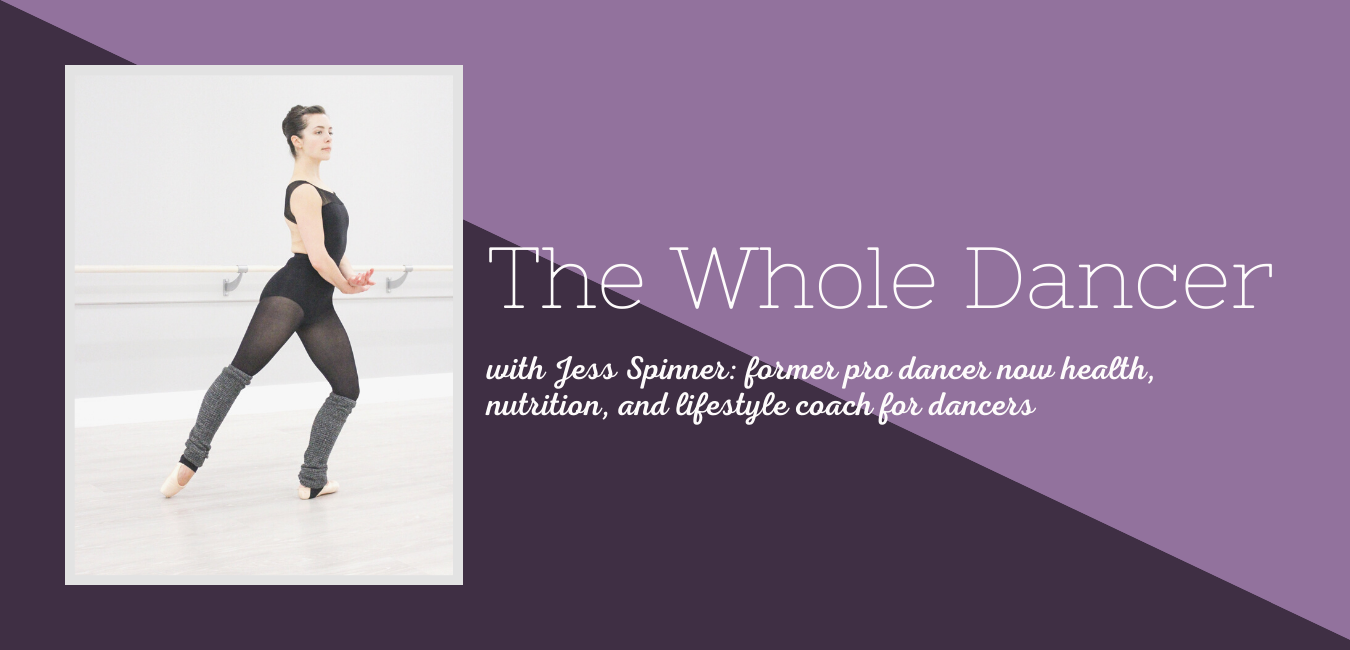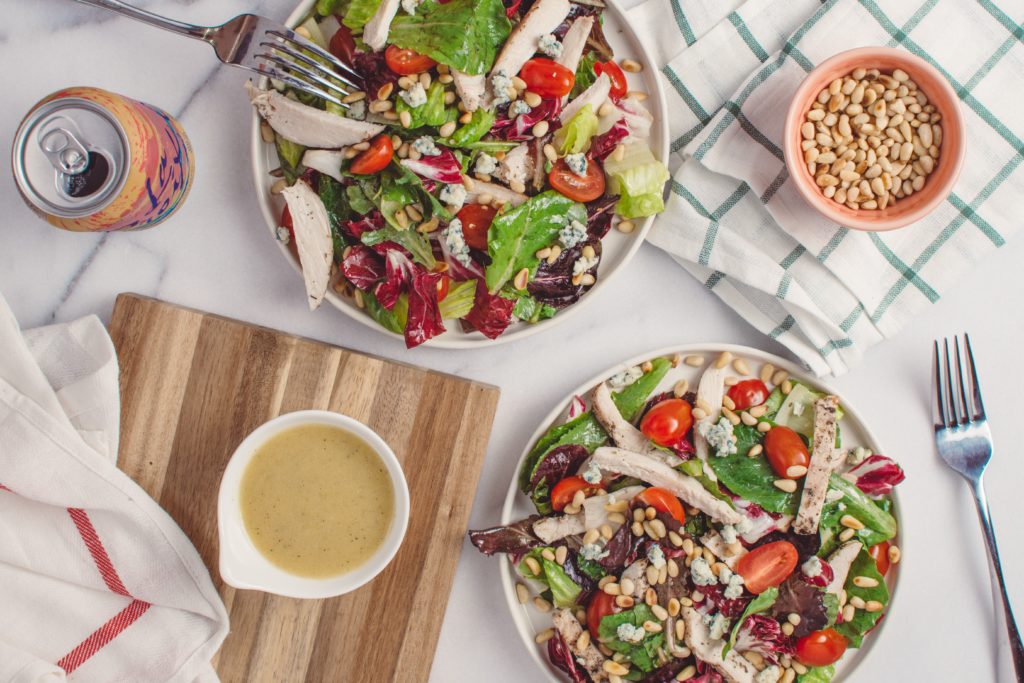When nutrition for dancers comes up, there are always lots of great questions! It makes sense. You see the connection between your food intake and performance. You might even notice a difference in your mood, energy, and stamina when you consume different things.
Many of the questions I get around nutrition for dancers have to do with “what to eat,” “how much to eat,” and “what’s balanced.” In this post, you’ll find answers and insights to some of the most common questions.
How do you find balance in your diet?
Include protein, carbohydrates, and fat throughout the day. If you’ve heard to prioritize one over the other, release that advice by committing to including all macros in your daily diet. Each macronutrient is essential and plays an important role in maintaining your health. Here are just a few of the many functions of each, simplified…
Carbohydrates’ primary role is to give you energy. They are your body’s preferred source of energy. Most carbs are broken down into glucose in the body. Your brain needs glucose to function. Simple carbs provide quick energy, while complex carbs provide more slowly released energy since your body takes longer to break them down.
- Some sources of simple carbs are refined grains, sugars in fruit, milk, or those added to foods. If a sugar ends in “ose,” it’s a simple carb.
- Complex carbs are in fiber-rich fruits, starchy vegetables, non-starchy vegetables, whole grains, and beans.
Protein allows for muscle building. This is it’s best known role; however, it also keeps muscle, bone, and tissues healthy. Protein plays a role in numerous body processes, including immune system responses.
- Common protein sources include dairy products, eggs, fish, meat, nuts and seeds, beans, lentils, and soy products.
- Protein is made up of amino acids. Your body uses 20 different amino acids; they’re known as the “building blocks of life.” It’s important to eat a variety of protein sources and include legumes in your diet most days if you eat a vegan or plant-based diet. Legumes are high in lysine, an amino acid that can be lacking in plant-based diets.
Fat supports cell growth, allows for absorption of fat-soluble vitamins A, D, E, and K, and they’re a significant source of energy.
- To ensure you’re getting enough fat, you might include avocado, nuts, seeds, oils, olives, or animal fats found in butter, cheese, dairy, eggs, and meat.
- The categorization of “healthy” vs. “unhealthy” fats have to do with chemical structure. In general, healthy fats have undergone less processing (think whole food sources with minimal ingredients).
Strive for balance to find satisfaction.
A balanced meal will include protein, carbs, and fat. Give yourself the opportunity to really think about what you’d like to eat. This may or may not be the “healthiest” option all the time. That’s OK. Allowing yourself to eat what you want leads to balance.
How do I experiment to discover which foods make me feel best while dancing?
Experimenting to find your ideal eating plan is one of my favorite things. It allows you to be in the driver’s seat so you can truly connect to your body, the food you’re eating, and the approach to food that works for you. It’s also a part of The Whole Dancer 7-Step Best Body Process.
First, start where you are. The experimentation process shouldn’t be drastic. You don’t have to change every meal and snack overnight. Start where you are.
Next, start to consider your eating with a critical eye. Notice if it’s heavy in one specific macronutrient or if you’re intentionally avoiding another. Add things in. Arguably, the most important component of a healthy experimentation process is that you start by adding things in, instead of taking things out.
Once you’ve added some carbs, fat, or protein throughout the day, consider making some swaps. Switch out your greek yogurt for cashew yogurt. Maybe have plant-based protein at one meal instead of animal-sourced protein. Swap your romaine lettuce for kale. The goal here is to see if an alternative may feel better for you from the perspective of satisfaction, digestion, or energy.
Throughout this process, pay close attention to how you feel. How are your energy levels? How’s your digestion? Are you having regular bowel movements? Consider the timing of different meals and snacks, and even more, notice if it’s something that works before class or rehearsal.
How do you know you’re getting the right amounts of the right things without being obsessive?
Variety. Food choices are so habitual. It’s normal to gravitate towards a lot of the same things most of the time. However, when you plan to get more variety, you’ll ensure that you’re getting most of what you need.
Subscribing to a produce box is a great way to keep your fruit and vegetable choices varied. You can usually see what’s coming and pick out some new recipes to incorporate that week’s produce.
The International Association for Dance Medicine and Science (IADMS) puts out a nutrition resource paper every few years. It’s extremely detailed and shares dancer-specific recommendations based on the latest research. For Dancers’ Nutrient Balance, they suggest 12–15% of calories from protein, 20–30% of calories from fats, and 45–65% of calories from carbohydrates.
The IADMS nutrition resource paper goes on to say, “As a guide, dancers will typically need between 4 and 8 grams of carbohydrate per kg body weight…the amount of daily fat needed is approximately 1 gram per kg body weight…dancers have previously been recommended to consume 1.2–1.7 grams of protein per kg of body weight, more recent research suggests a benefit to as much as 2.3 grams of protein per kg of body weight.”1
What should you do with macronutrient recommendations?
Now, this isn’t to suggest that you should start tracking your food intake obsessively. However, you might track it for a few days to see where you fall with macronutrient intake. From there, begin the experimentation process!
For peace of mind that you’re covering your micronutrient bases, consider including a multivitamin. Consult with your physician and know that a multivitamin is not an alternative to consuming adequate nutrition; however, it’s a way to fill in some possible gaps from day to day.
Nutrition for dancers is an important topic of discussion. However, it should be secondary to discussing the mental health of dancer athletes. Before putting pressure on yourself to make dietary changes, think about how you’re feeling physically, emotionally, and spiritually. If you’re doing well in each of those areas, it’s a good time to consider refining your approach to food. On the other hand, if your physical, emotional, or spiritual well-being needs attention, pick one area of focus and start there before working on the food piece.
References:
IADMS Nutrition Resource Paper


Pingback:Sleep Considerations for Dancers - The Whole Dancer